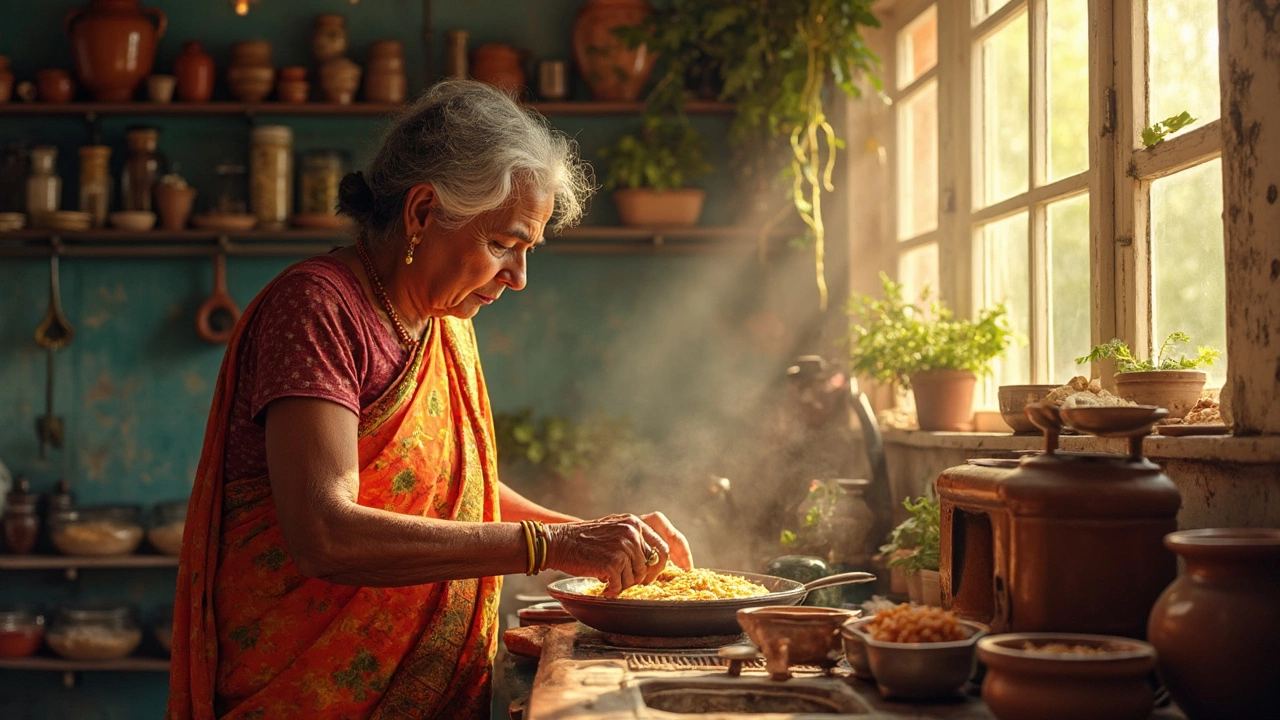Dosa Batter Fermentation: The Key to Perfect South Indian Crepes
When working with Dosa Batter Fermentation, the process of letting rice‑and‑lentil batter develop natural sourness and airy texture before cooking. Also known as dosa souring, it turns a simple mix into a light, crispy canvas for any filling. Understanding this transformation helps you nail dosas every time, whether you’re a first‑timer or a seasoned home cook.
One of the biggest boosters is curd, fresh fermented milk that adds acidity and beneficial bacteria. Also called yogurt, curd speeds up the microbial dance that creates that signature tang. Adding a handful to your batter not only cuts fermentation time but also improves the crumb structure, making the final crepes softer and more flavorful.
Temperature plays a starring role, too. temperature, the ambient heat level where the batter rests, determines how fast the good bacteria multiply. Warm rooms (around 30‑35 °C) accelerate the process, while cool spots slow it down, giving you more control over sourness. A quick tip: place the batter in an oven with the light on, or wrap the container in a kitchen towel to keep the heat even.
For those chasing extra fluff, baking soda, an alkaline powder that reacts with the batter’s acidity to release carbon dioxide, is a game‑changer. Known as sodium bicarbonate, a pinch added just before cooking creates tiny bubbles, turning a flat dosa into a light, airy stack. Use it wisely – too much can give a metallic taste, so a quarter teaspoon for a two‑cup batter is usually enough.
Putting these pieces together forms a clear chain: dosa batter fermentation depends on the right balance of microbes, acidity from curd, and stable temperature. The microbes convert sugars into lactic acid, which lowers pH and signals the batter to relax. Lower pH also primes the reaction with baking soda, producing CO₂ that lifts the batter when it hits the hot griddle. This cascade explains why each step matters and how they influence the final texture.
Practical Steps to Master Your Fermentation
Start with a clean, dry container and a 1:3 ratio of urad dal to rice – soak, grind, and blend until smooth. Add a spoonful of curd, stir, and cover loosely. Let it sit for 6‑12 hours, checking the scent; a pleasant sour smell means it’s ready. If you’re in a cooler climate, move the container to a warm spot or use the oven trick mentioned earlier. Right before cooking, sprinkle the measured baking soda, give a gentle stir, and you’re set to pour onto a hot, lightly oiled pan.
When you follow these tips, you’ll notice the batter puff up faster, the edges turn crisp, and the center stays soft. Most home cooks forget that fermentation isn’t just about time – it’s a living process that reacts to every ingredient you add. By adjusting curd levels, monitoring temperature, and timing the baking soda addition, you control the flavor and fluffiness. Below you’ll find articles that dive deeper into each of these aspects, from how curd changes the taste to troubleshooting common fermentation problems. Keep reading to fine‑tune your batter and impress anyone at the breakfast table.

Ferment Dosa Batter Immediately: Fast Methods That Actually Work
Craving dosa but forgot to ferment the batter overnight? No worries! This article breaks down simple and clever ways to speed up dosa batter fermentation without fancy gadgets. Get tips that actually work, including kitchen hacks and ingredient swaps for instant results. Learn how to troubleshoot common problems so you never have to skip your dosa fix. Perfect for beginners or anyone short on time.

Quickly Ferment Dosa Batter Without Yeast: Best Techniques
Discover the top methods to ferment dosa batter quickly without using yeast. Learn about temperature tricks, ingredient tips, and practical dos and don'ts for speedy fermentation. Enhance your dosa-making skills with reliable techniques for that perfect texture. Enjoy delicious homemade dosas without waiting forever. Save time and enjoy fresh dosas any day!

Fast Track Your Dosa Batter Fermentation Without Yeast
Missed setting your dosa batter to ferment overnight? No worries! You can still achieve that perfect texture and flavor by following simple methods that speed up the process naturally. Say goodbye to that packet of yeast, and learn how to work with what you have at home. And here's a bonus: these methods keep your dosa authentic. Let's get cooking with these speedy tricks!

Fast Dosa Batter: No Yeast, No Problem!
If you’re in a hurry but crave the delicious taste of dosa, these quick and easy fermentation tips will save the day. Learn how to make dosa batter without yeast, using methods to speed up fermentation without compromising on taste. Discover simple tweaks you can do at home to enjoy this iconic Indian dish anytime. Quick dosa solutions for the modern cook!